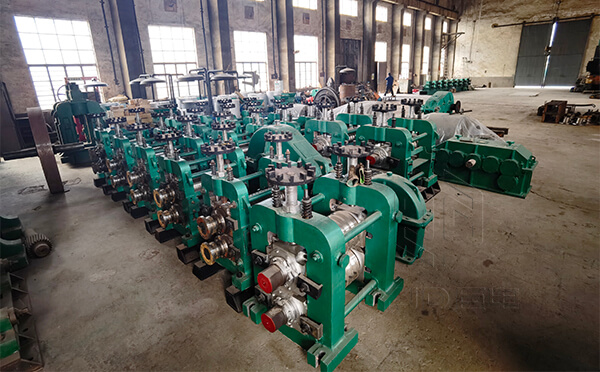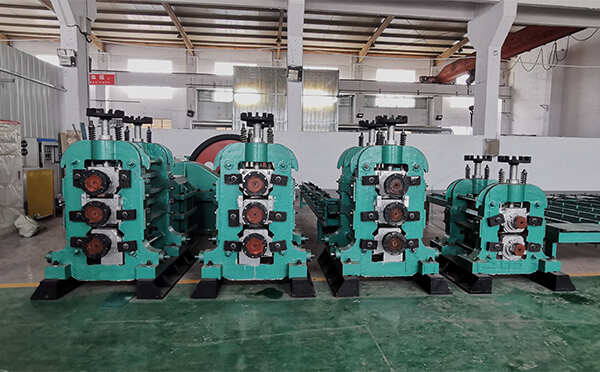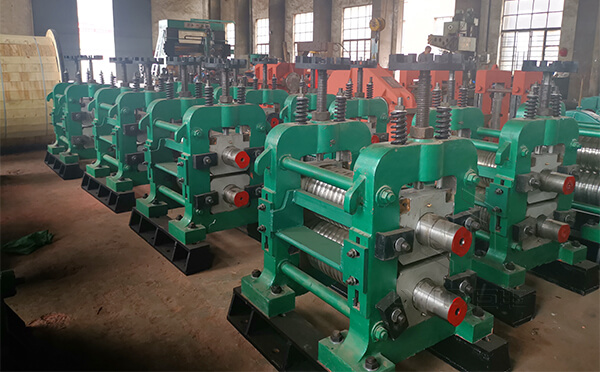A steel rebar rolling mill is a facility that specializes in the production of steel reinforcement bars, commonly known as rebar. Rebar is used extensively in the construction industry to provide strength and stability to concrete structures such as buildings, bridges, and highways.

To use a steel rebar rolling mill to produce rebar from scrap steel, you would typically follow these steps.
Collect scrap steel from various sources and sort it based on its composition and quality. Remove any non-ferrous materials or contaminants. The scrap steel should be clean and free from excessive rust, oil, or other impurities that could affect the quality of the final product.
Melt the sorted scrap steel in an electric arc furnace or a basic oxygen furnace. The furnace will heat the scrap steel to high temperatures, melting it down into a liquid state. During the melting process, fluxes and other additives may be added to remove impurities and adjust the chemical composition of the steel.
Once the molten steel has been refined, it is transferred to a continuous casting machine. The machine will cast the molten steel into billets, which are long rectangular shapes. The size and dimensions of the billets can be customized based on the desired rebar specifications.
The billets are reheated in a furnace to a temperature suitable for rolling. This ensures that the steel is malleable and can be shaped easily during the rolling process.
The reheated billets are passed through a series of rolling stands in the rolling mill. Each stand consists of a set of rolls that progressively shape the steel into the desired dimensions. The rolls apply pressure and deformation to the billet, gradually reducing its thickness and forming it into a long, slender bar. The number of rolling stands and the specific configurations of the rolls will depend on the desired rebar sizes and the capabilities of the rolling mill.

After the rolling process, the hot rebar is rapidly cooled to room temperature. This can be achieved through various cooling methods, such as water quenching or natural air cooling. Cooling the rebar properly helps to set its structure and properties.
Once the rebar has cooled down, it is cut into desired lengths using cutting machines. The cut lengths of rebar are then bundled and prepared for storage or transportation.
Operating a steel rebar rolling mill involves inherent risks, and it is crucial to follow safety protocols to ensure the well-being of workers and the safe operation of the mill. Here are some key safety protocols that should be followed when operating a steel rebar rolling mill.
All personnel involved in operating the rolling mill should receive comprehensive training on the safe operation of the equipment, including proper handling of materials, machinery operation, and emergency procedures. Training should cover potential hazards, safety protocols, and the proper use of personal protective equipment (PPE).
Workers should wear appropriate PPE based on the specific hazards of the mill. This may include safety glasses, hearing protection, gloves, safety shoes, and protective clothing. PPE should be properly maintained, regularly inspected, and replaced as needed.
Regular maintenance and inspection of the rolling mill equipment are essential to ensure safe operation. This includes checking for worn or damaged parts, lubricating machinery, and promptly addressing any identified issues. Lockout/tagout procedures should be implemented during maintenance and repair activities to prevent accidental startup of equipment.
Proper procedures should be followed for the handling, storage, and transportation of materials, including scrap steel, billets, and finished rebar. Adequate lifting and rigging techniques should be employed, and workers should be trained in safe material handling practices to prevent injuries.
Clear emergency procedures and protocols should be established and communicated to all personnel. This includes guidelines for responding to fires, equipment malfunctions, power outages, and other potential emergencies. Adequate fire suppression systems and firefighting equipment should be in place, and workers should be trained in their use.
Good housekeeping practices are essential to maintain a safe working environment. The mill should be kept clean and free from debris, spills, and obstacles that can pose trip or slip hazards. Regular inspections and maintenance of lighting, ventilation systems, and electrical wiring should be conducted to ensure their proper functioning.
Proper signage and labeling should be in place throughout the mill to indicate hazards, safety procedures, emergency exits, and the location of safety equipment. Clear and visible markings should be used to identify potential dangers, such as moving parts, high-temperature areas, and restricted zones.
Regular communication on safety matters should take place among workers, supervisors, and management. Safety meetings, toolbox talks, and training sessions should be conducted to address specific safety concerns, share best practices, and reinforce safety protocols.
A system for reporting and investigating incidents, near misses, and hazards should be established. This helps identify the root causes of incidents and implement corrective actions to prevent future occurrences. Employees should be encouraged to report any safety concerns or incidents promptly.

It's important to note that operating a steel rebar rolling mill requires specialized knowledge and expertise. Proper training and adherence to safety protocols are essential to ensure the efficient and safe operation of the mill. Additionally, specific operational details may vary depending on the design and technology of the rolling mill.
Please send us your request and we reply to you with in 24 hours.
Submit Request